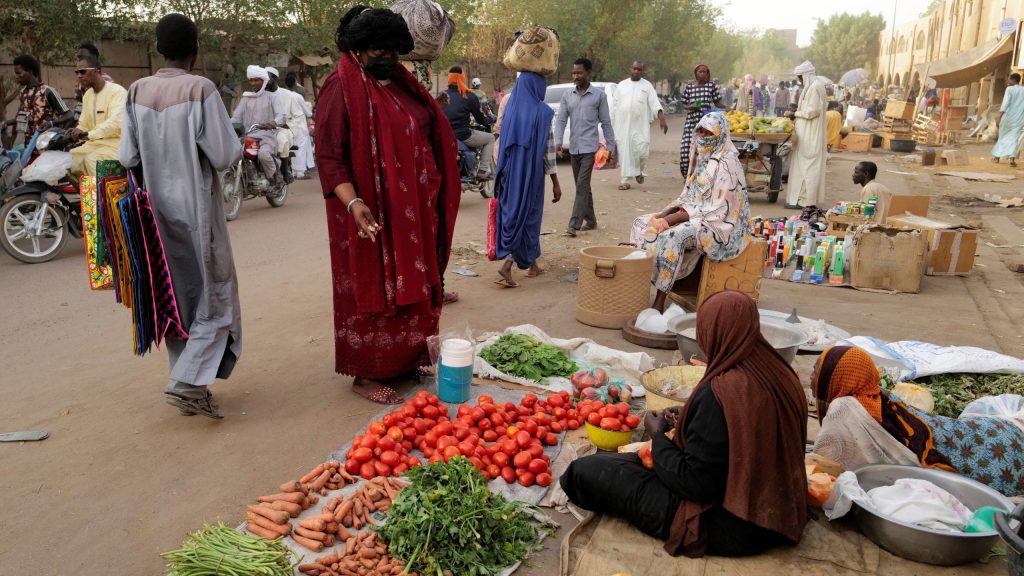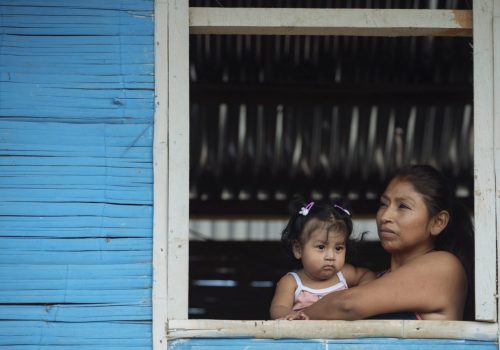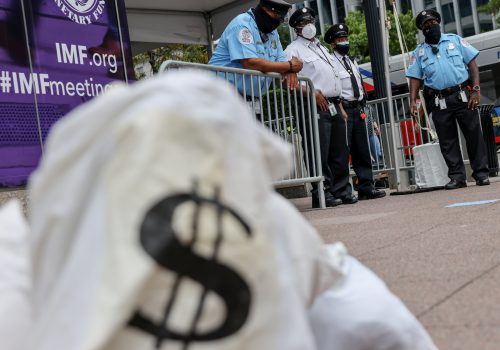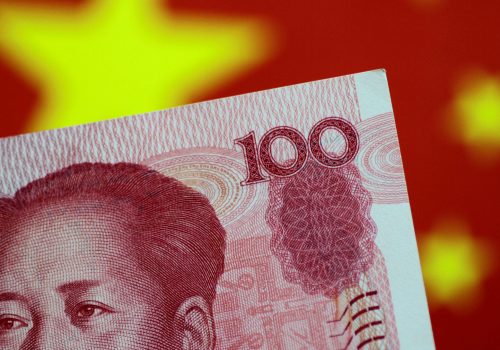When the finance ministers and central bank governors of the Group of Twenty (G20) meet in Bali this week—because Indonesia holds this year’s G20 presidency—they’ll focus on global health architecture, digital transformation, and sustainable energy transformation.
But there’s a fourth critical task that the G20 can’t afford to ignore: Preparing the world for a spate of debt crises in many low-income (LIC) and middle-income countries (MIC).
Initiatives aimed at addressing this challenge during the pandemic have largely failed, and unless these efforts are strengthened, sovereign debt crises will prevent vulnerable countries from fully bouncing back after the pandemic. This, in turn, would exacerbate the unevenness of the global economic recovery and make it less sustainable. Simply put, sovereign debt crises could stall the global economic recovery.
Here are some numbers underlining the key debt-related threats that the G20 must act on now to try and save the day:
$45.2 BILLION
That’s how much seventy three LICs shelled out to service their debts in 2020, despite a G20-led effort that brought them significant relief from debt payments that year.
The G20 launched the Debt Services Suspension Initiative (DSSI) at its April 2020 virtual meeting, calling on official and private-sector creditors to temporarily suspend the interest and principal that eligible LICs owed them. The initiative, originally meant to last through the end of 2020, was extended to the end of 2021. The money due to creditors will be repaid in the following five years, with a one-year grace period.
In all, forty-eight countries applied for DSSI relief, receiving thirteen billion dollars of debt-service suspension. The relief was granted mainly by bilateral, official lenders led by the Paris Club—a group of twenty-two creditor nations—and China. In total, Beijing has negotiated $10.8 billion worth of relief with debtor countries over the past two years, mostly through reprofiling and rescheduling outstanding debt.
But the payout LICs needed to make in 2020 exposes the mismatch between the ballooning debt of vulnerable nations and what the DSSI can offer, unless the private sector and multilateral development banks (such as the World Bank) also step up and promise relief. The debt-service payment that year dwarfed the twenty-one billion dollars’ worth of the new Special Drawing Rights (SDR) distribution allocated to those countries.
With the termination of the DSSI at the end of 2021, these LICs face debt-service payments worth $11 billion more this year. Overall, the external debt-service obligations of LICs have increased to 14.3 percent of government revenues in 2020 from only 6.8 percent in 2010—threatening to crowd out urgently needed public spending on health, social services, and other development needs. The G20 should create new measures to alleviate the unsustainable and harmful debt-service burden on LICs.
THREE
Chad, Ethiopia, and Zambia are the only countries to have applied for another of the G20’s initiatives to help heavily indebted nations: the Common Framework (CF) for debt treatments.
It was adopted in November 2020 to encourage creditors and sovereign debtors to efficiently negotiate debt restructuring when debt becomes unsustainable, including through the use of the World Bank and International Monetary Fund’s (IMF) Debt Sustainability Analysis. The CF is also designed to encourage bilateral lenders outside of the Paris Club (mainly China) to participate in multilateral debt restructuring. Most LICs, however, have avoided the CF due to fears of being downgraded by rating agencies and losing international capital market access.
Chad, which had $3.7 billion in external debt by the end of 2020, received a $570 million extended credit facility (ECF) from the IMF after engaging in debt-restructuring negotiations with an official creditor committee involving representatives from China, India, France, and Saudi Arabia. Zambia also reached an agreement with the IMF for a $1.4 billion ECF, though a final approval from the fund’s board will depend on the country’s progress in debt-restructuring negotiations with official creditors and private sector bondholders (the latter account for 40 percent of its external debt). Meanwhile, Ethiopia has held meetings with its official creditor committee, consisting of twelve countries chaired by France and China. The country’s external debt stock reached $30.4 billion in 2020.
To get more countries to embrace the CF, the G20 should expand the debt standstill it offers to countries to also cover rating agencies. That would ensure that debtor countries aren’t penalized with a downgrading when they apply for the CF debt treatment, encouraging them to use this initiative.
65 PERCENT
Nearly two-thirds of the total debt service (TDS) payment on risky public debt is borne by just one-third of countries—that’s twenty-three nations—which are not eligible for the CF (despite the outsized debt burden they carry).
The G20 needs to urgently expand the CF’s coverage to get rid of this bizarre anomaly. At the same time, debtor countries should be required to fully disclose their debt situation, including off-balance-sheet obligations. Finally, the role of private sector creditors and bondholders must be properly recognized in the CF, which currently doesn’t give private creditors room for much negotiation on their terms when they participate in debt restructuring.
The CF should recognize private creditor committees as participants in the negotiating process to shape restructuring terms, if they represent a majority of debt or bond holders by volume. The CF also should enable the sharing of debt information collected in the Debt Sustainability Analysis process with private creditors. Without that, it’s unlikely that private creditors will buy into the CF initiative.
$860 BILLION
That was the level of LICs’ external debt by the end of 2020, signaling the worsening debt troubles of these nations and serving as a warning beacon to the G20. As many as 60 percent of these nations are at high risk or are already in debt distress—twice the 30 percent recorded in 2015. That’s despite the DSSI, CF, and a special $650 billion distribution of SDR from the IMF.
Lessons learned
It’s also important to recognize the evolving practical tools private creditors and debtor countries used to restructure the debt of Ecuador ($17.4 billion) and Argentina ($65 billion) in the past two years. Their restructurings have been facilitated by representative bondholder committees making use of enhanced Collective Action Clauses that prevent minority holdouts from torpedoing deals agreed to by a qualified majority of bondholders. These experiences should be used as reference points in sovereign debt restructuring involving private creditors.
All in all, the G20 has its work cut out for it. Yet it can start by bolstering its existing initiatives, partly by learning from the experiences of the past two years. The forum was created more than two decades ago for precisely this reason: dealing with global economic challenges of massive proportions. Now, it must now face up to its latest test.
Hung Tran is a nonresident senior fellow at the Atlantic Council’s GeoEconomics Center, former executive managing director at the International Institute of Finance, and former deputy director at the IMF.
Further reading
Wed, Oct 13, 2021
The IMF needs to prepare for the post-COVID world
New Atlanticist By
The institution has shifted its focus toward climate policy and development finance in the last two years, but it should not stray from its global stability mandate.
Wed, Oct 20, 2021
Let them eat communiqués: Rich countries’ pandemic inaction
New Atlanticist By
Struggling countries came away with more questions than answers from last week's IMF and World Bank meetings.
Mon, Dec 13, 2021
China’s real ‘debt trap’ threat
New Atlanticist By Jeremy Mark
Chinese debt relief could help many indebted countries—but failure to act would ensnare both foreign borrowers and Chinese lenders.
Image: A customer buys vegetables from a street vendor at a market in N'djamena, Chad, on April 26, 2021. Photo by Zohra Bensemra/REUTERs



